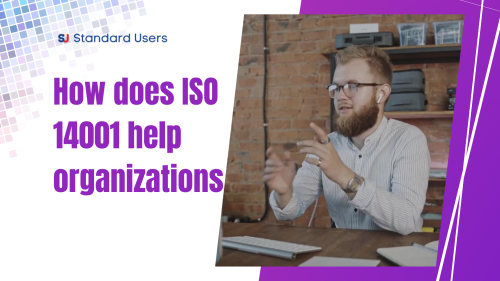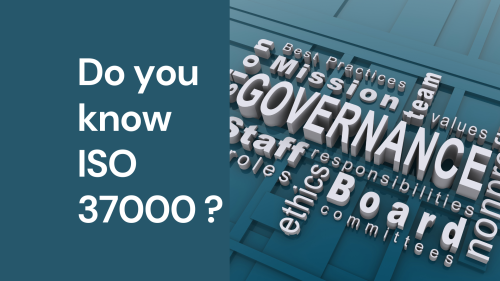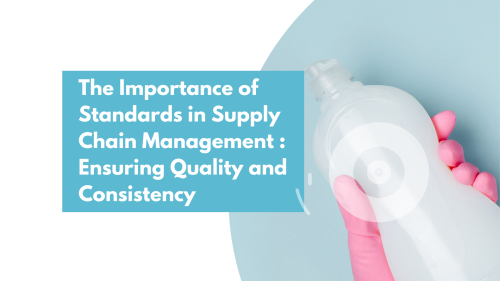Implementing ISO 14001, the international standard for Environmental Management Systems (EMS), can significantly enhance a company's environmental performance and sustainability. This guide outlines the essential steps for successfully adopting ISO 14001, helping companies streamline the process and achieve certification.
1. Understanding ISO 14001 Requirements
Before implementation, it’s crucial to thoroughly understand the requirements of ISO 14001. The standard outlines specific clauses and requirements that an organization must meet to establish an effective EMS. Key components include:
- Context of the Organization: Understanding internal and external factors that affect the organization’s ability to achieve its environmental objectives.
- Leadership: Commitment from top management to support the EMS.
- Planning: Identifying environmental aspects, compliance obligations, and setting objectives.
- Support: Ensuring resources, competence, and communication for the EMS.
- Operation: Implementing processes to meet environmental objectives.
- Performance Evaluation: Monitoring, measuring, and evaluating the EMS.
- Improvement: Continual improvement of the EMS.
2. Conducting a Gap Analysis
A gap analysis helps identify the differences between current practices and ISO 14001 requirements. This assessment reveals areas needing improvement and helps prioritize actions. The gap analysis involves:
- Reviewing existing environmental policies and procedures.
- Comparing current practices with ISO 14001 requirements.
- Identifying gaps and areas for improvement.
3. Securing Top Management Commitment
Top management's commitment is essential for successful implementation. Leadership should demonstrate support by:
- Providing necessary resources (financial, human, and technical).
- Communicating the importance of the EMS to all employees.
- Participating in setting environmental objectives and targets.
4. Establishing an Implementation Team
Forming a dedicated team to lead the implementation process ensures a focused approach. The team should include representatives from various departments and levels within the organization. Responsibilities of the implementation team include:
- Developing an implementation plan.
- Coordinating activities and tasks.
- Communicating progress to management and staff.
5. Developing an Environmental Policy
An environmental policy outlines the organization’s commitment to environmental protection and sustainability. It should include:
- A commitment to comply with legal and other requirements.
- Objectives for continual improvement.
- A framework for setting and reviewing environmental objectives and targets.
6. Identifying Environmental Aspects and Impacts
Identify the environmental aspects (activities, products, and services that interact with the environment) and their impacts. This step involves:
- Conducting an environmental impact assessment.
- Prioritizing significant environmental aspects based on their impact.
- Establishing controls to manage these aspects.
7. Setting Environmental Objectives and Targets
Based on the significant environmental aspects identified, set measurable environmental objectives and targets. Objectives should be:
- Specific, measurable, achievable, relevant, and time-bound (SMART).
- Aligned with the organization’s environmental policy and overall business strategy.
- Regularly reviewed and updated as necessary.
8. Developing and Implementing Operational Controls
Establish procedures and controls to manage significant environmental aspects. This includes:
- Creating documented procedures and work instructions.
- Training employees on environmental responsibilities and procedures.
- Implementing controls to mitigate environmental impacts.
9. Monitoring and Measurement
Develop a system to monitor and measure environmental performance. This involves:
- Identifying key performance indicators (KPIs).
- Regularly collecting and analyzing data.
- Conducting internal audits to verify compliance with the EMS.
10. Reviewing and Improving the EMS
Continual improvement is a core principle of ISO 14001. Regularly review the EMS to identify opportunities for improvement. This includes:
- Conducting management reviews to assess the effectiveness of the EMS.
- Implementing corrective and preventive actions to address non-conformities.
- Updating the EMS documentation and practices based on audit findings and performance reviews.
Conclusion
Implementing ISO 14001 requires a structured and systematic approach, involving a thorough understanding of the standard’s requirements, a dedicated implementation team, and a commitment to continual improvement. By following these steps, companies can establish an effective EMS, achieve ISO 14001 certification, and realize the benefits of enhanced environmental performance and sustainability.
The International Organization for Standardization (ISO) is a global entity that develops and publishes international standards for a wide range of industries and sectors. At the heart of ISO's standardization process are its Technical Committees (TCs). These committees play a crucial role in creating, revising, and maintaining standards that promote safety, efficiency, and interoperability worldwide.
What Are Technical Committees?
Technical Committees (TCs) are specialized groups within ISO responsible for developing standards in specific areas. Each TC is composed of experts from various sectors, including industry, government, academia, and consumer groups. These experts collaborate to draft standards that address current and emerging needs in their respective fields.
Structure and Composition
ISO's technical committee structure is hierarchical and well-organized to ensure efficiency and coherence in standard development. A typical TC structure includes:
- Chairperson: Leads the committee and oversees its activities.
- Secretariat: Provides administrative support and coordination.
- Working Groups (WGs): Subgroups that focus on specific tasks or parts of a standard.
- Liaison Organizations: External bodies that collaborate with the TC on related subjects.
Key Functions of Technical Committees
Development of Standards
The primary function of TCs is to develop new standards. This process involves several stages, including:
- Proposal Stage: A new standard is proposed, usually by a member body or an existing TC.
- Preparatory Stage: A working group is formed to prepare a working draft.
- Committee Stage: The draft standard is reviewed and refined by the TC.
- Enquiry Stage: The draft is circulated among ISO members for comments and voting.
- Approval Stage: The final draft is approved by ISO members.
- Publication Stage: The approved standard is published and made available to the public.
Maintenance of Standards
In addition to developing new standards, TCs are responsible for maintaining existing ones. This includes regular reviews and updates to ensure standards remain relevant and effective in the face of technological advancements and changing market conditions.
Collaboration and Coordination
TCs often work closely with other committees, organizations, and stakeholders. This collaboration ensures that standards are comprehensive and take into account diverse perspectives and expertise. TCs may also engage in joint projects with other standardization bodies to develop harmonized standards that facilitate international trade and cooperation.
Examples of Key Technical Committees
ISO/TC 176 - Quality Management and Quality Assurance
ISO/TC 176 is responsible for the ISO 9000 family of standards, which provide guidelines and requirements for quality management systems (QMS). The ISO 9001 standard, in particular, is widely recognized and implemented by organizations worldwide to ensure consistent quality in their products and services.
ISO/TC 207 - Environmental Management
ISO/TC 207 focuses on environmental management standards, including the ISO 14000 family. These standards help organizations minimize their environmental impact and comply with environmental regulations. The ISO 14001 standard, for example, specifies requirements for an effective environmental management system (EMS).
ISO/TC 262 - Risk Management
ISO/TC 262 develops standards related to risk management. The ISO 31000 standard, developed by this committee, provides guidelines for managing risk in any organization, regardless of its size or industry. It offers a structured approach to identifying, assessing, and mitigating risks.
Benefits of Technical Committees
Expertise and Inclusivity
The involvement of diverse experts ensures that standards are based on a broad range of knowledge and experience. This inclusivity enhances the quality and applicability of standards.
Global Consistency
By developing international standards, TCs promote consistency and interoperability across different countries and industries. This facilitates international trade and reduces barriers to market entry.
Continuous Improvement
The regular review and updating of standards by TCs ensure that they remain relevant and effective. This continuous improvement process helps organizations stay current with technological and regulatory changes.
Conclusion
Technical Committees (TCs) are the backbone of ISO's standardization efforts. Through their diligent work, TCs develop and maintain standards that enhance quality, safety, and efficiency across various sectors. By bringing together experts from around the world, TCs ensure that ISO standards are comprehensive, relevant, and beneficial to the global community.
ISO 14001, an international standard for Environmental Management Systems (EMS), offers numerous benefits to companies across various industries. This standard, part of the ISO 14000 family, provides a framework for organizations to protect the environment, respond to changing environmental conditions, and meet socio-economic needs. Here are the key benefits ISO 14001 brings to companies:
1. Enhanced Environmental Performance
ISO 14001 helps companies systematically identify and control their environmental impacts, leading to improved environmental performance. This structured approach ensures that companies not only comply with environmental regulations but also proactively reduce their environmental footprint.
2. Regulatory Compliance
Adhering to ISO 14001 helps companies stay ahead of environmental legislation. By integrating regulatory requirements into their EMS, companies can avoid legal penalties, reduce the risk of non-compliance, and build a positive reputation with regulators and stakeholders.
3. Cost Savings
Implementing ISO 14001 can lead to significant cost savings. By optimizing resource use and reducing waste, companies can lower operational costs. Energy efficiency improvements and waste minimization also contribute to cost reductions, making the organization more financially sustainable.
4. Risk Management
ISO 14001 aids in identifying environmental risks and implementing measures to mitigate them. This proactive risk management approach helps prevent environmental incidents that could result in financial liabilities, operational disruptions, and damage to the company’s reputation.
5. Market Advantage
Certification to ISO 14001 can enhance a company’s marketability. Many customers and stakeholders prefer doing business with environmentally responsible organizations. ISO 14001 certification can serve as a differentiator in the marketplace, attracting eco-conscious consumers and clients.
6. Improved Stakeholder Relationships
Adopting ISO 14001 demonstrates a company’s commitment to environmental stewardship, which can improve relationships with stakeholders, including customers, employees, investors, and the community. Transparent environmental practices foster trust and goodwill.
7. Employee Engagement and Morale
Implementing an EMS involves employees at all levels, fostering a culture of environmental responsibility. Engaged employees who feel they are contributing to environmental protection are more likely to be motivated and satisfied with their work.
8. Continual Improvement
ISO 14001 promotes a cycle of continual improvement. Companies are required to set environmental objectives, monitor performance, and make necessary adjustments. This ongoing process helps organizations stay relevant and responsive to environmental challenges and opportunities.
9. Integration with Other Management Systems
ISO 14001 can be easily integrated with other management systems, such as ISO 9001 (Quality Management) and ISO 45001 (Occupational Health and Safety Management). This integration streamlines processes, reduces duplication of efforts, and enhances overall organizational efficiency.
10. Global Recognition
ISO 14001 is recognized internationally, providing companies with a globally accepted framework for environmental management. This recognition can facilitate international trade and enhance the company's reputation on a global scale.
Conclusion
ISO 14001 offers a comprehensive framework for companies to manage their environmental responsibilities effectively. By achieving ISO 14001 certification, companies not only improve their environmental performance but also gain significant operational, financial, and reputational benefits. This standard supports sustainable business practices, contributing to long-term success and resilience in a rapidly changing world.
The International Organization for Standardization (ISO) is recognized worldwide for developing and publishing international standards in various industries and sectors. One of its key departments, Technical Committee 262 (TC 262), plays a crucial role in the development of risk management standards.
The ISO TC 262: The Risk Management ISO Technical Committee
Established in 2011, ISO TC 262 was specifically designed to provide a structured and standardized approach to managing various types of risks. ISO TC 262 is responsible for developing, maintaining, and updating ISO 31000, the globally recognized standard for risk management. The committee primarily focuses on managing uncertainties and potential hazards that might affect an organization's ability to achieve its objectives.
The Role and Responsibilities of ISO TC 262
ISO TC 262's primary task is to harmonize and streamline the standards of risk management. The committee addresses areas of risk management, including principles and guidelines, terminology, and risk assessment techniques.
The committee is responsible for regularly reviewing and updating the ISO 31000 standard, ensuring its relevance and adequacy in the face of evolving risk landscapes. Moreover, ISO TC 262 is entrusted with the task of providing support and guidance for other ISO committees that require expertise in risk management. This collaboration ensures a consistent and coherent application of risk management principles across all ISO standards.
ISO 31000: The Flagship Standard
ISO 31000:2018, the latest version of the standard provides principles, a framework, and a process for managing risk. It can be used by any organization, regardless of its size, activity, or sector. ISO 31000 guides organizations in developing, implementing, and continuously improving their risk management strategy.
While the standard does not mandate requirements for regulatory or certification purposes, it serves as a guiding principle for organizations to enhance their risk management practices. It helps organizations identify, understand, and respond to the potential risks and opportunities that could influence the achievement of their objectives.
Working Groups within ISO TC 262
Within ISO TC 262, there are several Working Groups (WGs) focusing on different aspects of risk management. These WGs include experts from different countries who contribute their knowledge and skills to develop and improve standards. Each WG may focus on a particular aspect of risk management, like updating the ISO 31000 standard, working on risk assessment techniques, or addressing specific industry needs.
Conclusion
ISO TC 262 plays a pivotal role in the global risk management landscape. By continuously improving the ISO 31000 standard, it provides organizations with the best practices to manage and mitigate risks effectively. This committee not only serves as a standard-bearer for risk management but also strengthens the overall fabric of ISO standards by providing guidance and support to other technical committees. As businesses and organizations face an ever-evolving risk landscape, the importance of ISO TC 262 and the standards it maintains will continue to grow.
?#Standards? ?#StandardUsers? #StandardUser ?#ISO31000? ?#ISOTC262?
The International Organization for Standardization (ISO) is an international non-governmental organization that sets standards for products, services, and systems. ISO has developed a number of standards that apply to travel, including:
- ISO 31030:2021 - Travel risk management — Guidance for organizations
- ISO 21902:2021 - Tourism and related services — Accessible tourism for all — Requirements and recommendations
- ISO 22805:2018 - Passenger transport — Accessibility of transport vehicles and systems — Requirements and recommendations
- ISO 22806:2018 - Passenger transport — Accessibility of transport terminals — Requirements and recommendations
- ISO 22807:2018 - Passenger transport — Accessibility of transport information and communication — Requirements and recommendations
ISO 31030 provides guidance to organizations on how to manage the risks to their travelers, including risks from terrorism, crime, and natural disasters. The standard covers a wide range of topics, such as:
- Threat and hazard identification
- Risk assessment
- Prevention and mitigation strategies
- Communication and training
- Monitoring and review
ISO 21902 provides requirements and recommendations for accessible tourism for all. The standard covers a wide range of topics, such as:
- Policy making
- Strategy
- Infrastructure
- Products and services
- Communication
ISO 22805, ISO 22806, and ISO 22807 provide requirements and recommendations for the accessibility of transport vehicles, terminals, and information and communication systems. The standards cover a wide range of topics, such as:
- Design
- Construction
- Operation
- Maintenance
- Information and communication
These ISO standards can help organizations to improve the safety and accessibility of their travel services. By implementing these standards, organizations can reduce the risks to their travelers and make their travel services more accessible to everyone.
Benefits of Implementing ISO Standards on Travel
There are many benefits to implementing ISO standards on travel, including:
- Improved safety
- Increased accessibility
- Reduced risk
- Improved compliance
- Enhanced reputation
- Increased customer satisfaction
How to Implement ISO Standards on Travel
The first step in implementing ISO standards on travel is to understand the standards. The standards are available for purchase from the ISO website. Once you understand the standards, you can begin to implement them in your organization. The following steps can help you to get started:
- Assess your current travel practices.
- Identify areas where you can improve.
- Develop a plan to implement the improvements.
- Implement the plan and monitor your progress.
- Review and improve your travel practices on an ongoing basis.
Conclusion
ISO standards on travel can help organizations to improve the safety, accessibility, and efficiency of their travel services. By implementing these standards, organizations can reduce the risks to their travelers, make their travel services more accessible to everyone, and improve their reputation.
#Travel, #ISOStandards, #StandardsUsers, #StandardUsers, #Tourism
ISO 37000:2021 - Governance of organizations — Guidance. It is an international standard that provides guidance on good governance for organizations. It is applicable to all organizations, regardless of their size, type, or location. The standard defines governance as "the system by which an organization is directed, overseen and held accountable." It covers a wide range of topics, including:
- Purpose and values
- Strategy and planning
- Risk management
- Compliance
- Ethics and sustainability
- Stakeholder engagement
- Performance measurement
ISO 37000 is a valuable resource for organizations that want to improve their governance practices. It can help organizations to:
- Increase transparency and accountability
- Reduce risk
- Improve decision-making
- Build trust with stakeholders
- Achieve their strategic goals
The standard is also a valuable tool for organizations that are seeking to comply with regulations. ISO 37000 can help organizations to demonstrate that they have implemented effective governance practices.
Benefits of Implementing ISO 37000
There are many benefits to implementing ISO 37000, including:
- Increased transparency and accountability
- Reduced risk
- Improved decision-making
- Built trust with stakeholders
- Achieved strategic goals
- Complying with regulations
How to Implement ISO 37000
The first step in implementing ISO 37000 is to understand the standard. The standard is divided into five parts:
- Part 1: Introduction
- Part 2: Principles of governance
- Part 3: Key aspects of practices
- Part 4: Implementation guidance
- Part 5: Use of the standard
Once you understand the standard, you can begin to implement it in your organization. The following steps can help you to get started:
- Assess your current governance practices.
- Identify areas where you can improve.
- Develop a plan to implement the improvements.
- Implement the plan and monitor your progress.
- Review and improve your governance practices on an ongoing basis.
Conclusion
ISO 37000 is a valuable resource for organizations that want to improve their governance practices. The standard can help organizations to increase transparency and accountability, reduce risk, improve decision-making, build trust with stakeholders, achieve their strategic goals, and comply with regulations. If you are looking for a way to improve your organization's governance, ISO 37000 is a great place to start.
#ISO37000, #Governanceoforganizations, ?#Organizations?, ?#Governance?
User interfaces (UI) significantly impact the overall digital experience, playing a crucial role in usability, engagement, and customer satisfaction. Standardized UI design principles and practices are key to achieving seamless interactions and consistency across digital platforms. In this article, we explore the importance of standardized user interfaces and their alignment with ISO standards. By understanding and implementing these standards, users can enhance their digital experiences and foster positive user interactions.
1. Understanding Standardized User Interfaces:
Standardized user interfaces refer to the adoption of consistent design patterns, elements, and interactions across digital products and services. These interfaces provide familiarity, ease of use, and a sense of cohesiveness for users, enhancing their overall digital experience.
2. ISO Standards for UI Design:
ISO standards play a vital role in guiding UI design practices. ISO 9241 focuses on the ergonomics of human-system interaction, while ISO 13407 addresses human-centered design processes. These standards provide frameworks for creating intuitive, accessible, and user-centric UIs.
3. Consistency and Interoperability:
Standardized UI design fosters consistency in visual elements, navigation, and interaction patterns, leading to smoother user experiences. ISO 20282 emphasizes common UI design elements for software user interfaces, ensuring interoperability and ease of use across different platforms and applications.
4. Accessibility and Inclusive Design:
ISO 9241-171 specifically addresses accessibility requirements in UI design, promoting inclusive experiences for users with disabilities. Adhering to accessibility standards ensures that digital products and services are usable and accessible to all individuals, regardless of their abilities.
5. Best Practices and Guidelines:
Implementing standardized UI design practices involves adopting industry guidelines such as Material Design and Apple's Human Interface Guidelines. These guidelines provide design principles, recommendations, and patterns that contribute to cohesive and user-friendly interfaces.
6. Usability Testing and User Feedback:
Employing usability testing and gathering user feedback are essential steps in optimizing UI design. Conducting user testing sessions and obtaining feedback from target users helps identify areas for improvement, ensuring that the UI meets user expectations and preferences.
Conclusion:
Standardized user interfaces, aligned with ISO standards, are integral to creating seamless digital experiences. By adopting consistent design patterns, adhering to ISO standards, and incorporating user feedback, users can enhance usability, engagement, and overall satisfaction. Embracing standardized UI design principles leads to intuitive interactions, improved accessibility, and a cohesive digital experience across platforms and applications. By prioritizing standardized user interfaces and leveraging ISO standards, users can maximize the benefits of their digital interactions and create positive user experiences.
#StandardizedUserInterfaces, #SeamlessDigitalExperiences, #ISOStandards, #UIDesignPrinciples, #Consistency, #Interoperability, #Accessibility, #InclusiveDesign, #BestPractices, #UserExperience
In an increasingly digital world, secure online transactions are paramount to protect sensitive information. Standardized security protocols play a vital role in establishing trust and ensuring the confidentiality, integrity, and authenticity of these transactions. In this article, we will delve into the importance of standardized security protocols and their alignment with ISO standards. By understanding and implementing these standards, users can enhance the security of their online transactions.
1. The Significance of Security Protocols:
Security protocols are essential for secure online transactions, providing mechanisms to protect sensitive data from unauthorized access or tampering. They establish a framework for authentication, encryption, and data integrity, enabling users to conduct transactions with confidence.
2. ISO Standards for Security Protocols:
The International Organization for Standardization (ISO) has developed relevant standards that govern security protocols. ISO/IEC 27001 focuses on information security management systems, while ISO/IEC 27002 addresses security controls. These standards provide guidance on implementing effective security measures to safeguard online transactions.
3. Ensuring Secure Connections with SSL/TLS:
Secure Sockets Layer (SSL) and Transport Layer Security (TLS) protocols are widely used for establishing secure connections over networks. Adhering to ISO/IEC 27017, which provides guidelines for information security controls specific to cloud services, ensures the proper implementation of SSL/TLS and enhances the security of online transactions.
4. Authorization and Identity Verification with OAuth:
OAuth has become a prevalent protocol for secure authorization and identity verification in online transactions. ISO/IEC 29115 offers guidelines for implementing authentication assurance using OAuth, reinforcing the importance of adhering to ISO standards for secure identity verification.
5. Encryption and Data Integrity with PGP:
Pretty Good Privacy (PGP) is a cryptographic protocol that ensures secure communication and data integrity. ISO/IEC 18033 standardizes cryptographic techniques, including those used in PGP, to protect data confidentiality and integrity in online transactions.
6. Benefits of ISO Standards:
Adhering to ISO standards for security protocols offers numerous benefits. They provide a common framework for implementing robust security measures, increase compatibility and interoperability between systems, and ensure adherence to industry best practices.
7. Implementing ISO Standards:
Implementing ISO standards for security protocols requires a comprehensive approach. Organizations should conduct risk assessments, develop security policies and procedures, and regularly update their security measures based on the evolving threat landscape. Compliance with ISO standards can be achieved through auditing and certification processes.
Conclusion:
Standardized security protocols, aligned with ISO standards, play a pivotal role in safeguarding online transactions. By understanding the significance of these protocols and implementing relevant ISO standards, users can enhance the security of their online transactions, protect sensitive information, and build trust with customers. Embracing standardized security protocols and adhering to ISO standards enable users to navigate the digital landscape securely and conduct online transactions with confidence.
#StandardizedSecurityProtocols, #OnlineTransactions, #ISOStandards, #SSL, #TLS, #OAuth, #PGP, #SecureConnections, #IdentityVerification, #Encryption, #DataIntegrity
In the digital world, standardized formats for digital files play a crucial role in ensuring compatibility, interoperability, and long-term accessibility. The International Organization for Standardization (ISO) is at the forefront of developing and maintaining these standards. In this article, we will delve into the significance of standardized formats for digital files and explore the relevant ISO standards that govern them. By understanding and leveraging these standards, users can optimize their digital file management and utilization.
1. The Importance of Standardized Formats:
Standardized formats provide a common language for digital files, enabling seamless exchange and sharing of information. They establish uniform specifications, ensuring compatibility across different software applications, platforms, and devices. By adhering to standardized formats, users can minimize conversion issues, improve file compatibility, and facilitate smooth collaboration.
2. ISO Standards for Digital File Formats:
The ISO has developed several standards that govern different digital file formats. For instance, ISO 32000 standardizes the PDF format, ISO/IEC 14496 focuses on MPEG-4 for multimedia files, and ISO/IEC 10918 sets the standard for JPEG images. These standards define the technical specifications, encoding schemes, and other critical elements that ensure consistent interpretation and handling of digital files.
3. Advantages of Standardized Formats:
Utilizing standardized formats brings numerous benefits to users. Firstly, it enhances interoperability, allowing files to be seamlessly shared and accessed across various software and hardware systems. Secondly, it simplifies the file conversion process, reducing the risk of data loss or compatibility issues. Furthermore, standardized formats improve long-term accessibility, as they provide a stable foundation for preserving digital files over time.
4. Best Practices for File Format Selection:
When dealing with digital files, selecting the appropriate format is essential. Users should consider factors such as the purpose of the file, compatibility requirements, and long-term accessibility goals. By following best practices, such as choosing widely accepted formats and considering open standards, users can ensure greater compatibility and reduce the risk of format obsolescence.
5. Staying Up-to-Date with ISO Standards:
ISO standards evolve over time, incorporating advancements in technology and addressing emerging needs. Users are encouraged to stay informed about the latest revisions and updates to ISO standards for digital file formats. This helps users leverage new features, ensure compatibility with the latest software, and stay up-to-date with industry best practices.
Conclusion:
Standardized formats for digital files, governed by ISO standards, play a pivotal role in achieving compatibility, interoperability, and long-term accessibility. Understanding the significance of standardized formats and leveraging the relevant ISO standards empowers users to optimize their digital file management, improve compatibility across systems, and ensure long-term accessibility of their digital assets. By embracing standardized formats, users can confidently navigate the digital landscape and harness the full potential of their digital files.
#DigitalFileFormats, #ISOStandards, #Interoperability, #LongTermAccessibility, #FilePreservation, #Compatibility, #StandardizedFormats, #DigitalFileManagement, #FileConversion, #BestPractices
This the Space for Standards Users from Karnataka to collaborate and network. Please join and connect with Standards Users from Karnataka
In today's rapidly evolving technological landscape, industry standards are essential for ensuring safety, interoperability, and reliability across different products and systems. Standards provide a common language for businesses and organizations, enabling them to collaborate and innovate while maintaining quality and consistency. In this article, we'll explore the future of standards and how emerging technologies are shaping the evolution of standards.
The Emergence of New Technologies
New technologies such as artificial intelligence, blockchain, and the Internet of Things (IoT) are disrupting traditional industries and creating new opportunities for innovation. These technologies are also influencing the development of new standards.
For example, the rise of AI is creating a need for standards around the ethical and responsible use of AI, as well as standards for the interoperability and security of AI systems. Similarly, the adoption of blockchain is leading to the development of new standards around the secure exchange and management of digital assets.
The Evolution of Existing Standards
Existing standards are also evolving to keep pace with new technologies. For example, the ISO 9001 standard for quality management has been updated to include new requirements for risk management and supply chain management. The ISO 14001 standard for environmental management has been updated to address emerging issues such as climate change and resource depletion.
The development of new and updated standards is being driven by a range of factors, including advances in technology, changes in business practices, and shifting societal values.
The Importance of Standards in Emerging Technologies
Standards play a critical role in the development and adoption of emerging technologies. They provide a framework for innovation, enabling businesses and organizations to collaborate and share knowledge. Standards also help to ensure interoperability, security, and safety across different systems and products.
In addition, standards can help to address ethical and social issues associated with emerging technologies. For example, standards can be used to promote transparency and accountability in the development and use of AI systems.
Best Practices for Developing Standards for Emerging Technologies
Developing standards for emerging technologies requires a collaborative and iterative approach. Here are some best practices for developing standards in this area:
- Engage stakeholders: Engage a broad range of stakeholders, including industry leaders, academics, and representatives from government and civil society.
- Be agile: Adopt an agile approach to standards development, with frequent updates and iterations based on feedback and new developments.
- Address ethical and social issues: Address ethical and social issues associated with emerging technologies, such as privacy, security, and accountability.
- Embrace collaboration: Embrace collaboration and knowledge-sharing across different industries and disciplines.
- Stay up-to-date: Stay up-to-date with emerging trends and developments in technology and business practices.
In conclusion, emerging technologies are shaping the future of standards, creating new opportunities for innovation and collaboration. By engaging stakeholders, adopting an agile approach, addressing ethical and social issues, embracing collaboration, and staying up-to-date, businesses and organizations can help to shape the future of standards and ensure the continued evolution of this critical component of industry and society.
#Industrystandards, #Emergingtechnologies, #Artificialintelligence, #AI, #Blockchain, #InternetofThings, #IoT, #ISO9001, #ISO14001, #Qualitymanagement, #Environmentalmanagement, #Riskmanagement, #Supplychainmanagement, #Interoperability, #Security, #Ethics, #Transparency, #Accountability, #Collaboration, #Innovation, #Agiledevelopment, #Stakeholderengagement, #Businesspractices, #Society, #Trendsanddevelopments
This space is for colloborating and working together in different areas of focus of ISMS (Information Security Management System)
This space is for colloborating and working together in different areas of focus of ISMS (Information Security Management System)
Supply chain management is a critical component of business operations, ensuring that goods and services are delivered to customers in a timely and efficient manner. Adherence to industry standards plays a vital role in supply chain management, providing a framework for quality and consistency in the procurement and delivery of goods and services. In this article, we'll explore the importance of standards in supply chain management and how they ensure quality and consistency.
What Are Supply Chain Standards ?
Supply chain standards are guidelines that provide a framework for best practices in supply chain management. These standards cover a wide range of topics, including supplier management, procurement, logistics, and transportation. They are developed by national and international organizations, such as the International Organization for Standardization (ISO) and the National Institute of Standards and Technology (NIST).
The Importance of Standards in Supply Chain Management
1. Quality Assurance
One of the primary roles of standards in supply chain management is to ensure quality assurance. Supply chain standards provide guidelines for best practices in areas such as supplier selection, product testing, and quality control. By adhering to these standards, businesses can ensure that their products and services meet the highest standards of quality.
2. Consistency
Adherence to supply chain standards also ensures consistency in the procurement and delivery of goods and services. Standards provide guidelines for the standardization of processes, ensuring that businesses can deliver goods and services in a consistent and efficient manner.
3. Risk Mitigation
Standards also play a critical role in risk mitigation in supply chain management. Standards provide guidelines for risk assessment and risk management, helping businesses to identify potential risks and develop strategies to mitigate them. This can include strategies for supplier diversification, logistics optimization, and disaster preparedness.
4. Regulatory Compliance
Adherence to supply chain standards is often a requirement for regulatory compliance. Many countries and regions have regulations in place that require businesses to comply with supply chain standards. By adhering to these standards, businesses can ensure compliance and avoid fines and penalties.
Best Practices for Compliance with Supply Chain Standards
1. Identify Relevant Standards
The first step in compliance with supply chain standards is to identify the relevant standards for your industry or technology. This may involve researching different supply chain standards organizations and their published standards.
2. Evaluate the Standards
Once you've identified the relevant standards, you should evaluate them to determine whether they meet your business needs. This may involve testing or prototyping different solutions to determine which standard works best for your business.
3. Implement the Standards
Once you've identified the relevant standards and evaluated them, you can begin implementing them in your supply chain management processes. This may involve updating existing systems or developing new processes or services that are based on the standard.
4. Monitor and Maintain Compliance
Finally, it's important to monitor and maintain compliance with the adopted supply chain standards. This may involve regular testing and evaluation to ensure that your systems and products continue to meet the standards.
In conclusion, adherence to industry standards is essential for ensuring quality and consistency in supply chain management. By identifying relevant standards, evaluating them, implementing them, and monitoring compliance, businesses can leverage the power of supply chain standards to improve their operations and create a more efficient and effective supply chain model.
#Supplychainmanagement, #Industrystandards, #Qualityassurance, #Consistency, #Riskmitigation, #Regulatorycompliance, #Suppliermanagement, #Procurement, #Logistics, #Transportation, #InternationalOrganizationforStandardization, #ISO, #NationalInstituteofStandardsandTechnology, #NIST, #Testingandprototyping, #Riskassessment, #Disasterpreparedness, #Compliancemonitoring, #Supplychainoptimization
In today's digital age, privacy and data protection have become increasingly important issues for businesses and organizations of all sizes. Compliance with privacy and data protection standards is essential for protecting sensitive information and ensuring the privacy rights of individuals. In this article, we'll explore the best practices for compliance with privacy and data protection standards.
Understanding Privacy and Data Protection Standards
Privacy and data protection standards are guidelines that provide a framework for the collection, storage, use, and disclosure of personal information. These standards cover a wide range of topics, including data privacy, data security, and confidentiality.
In the United States, the General Data Protection Regulation (GDPR) and the California Consumer Privacy Act (CCPA) set the standards for privacy and data protection. The GDPR applies to any business that collects or processes data from individuals in the European Union, while the CCPA applies to any business that collects or processes data from California residents.
Best Practices for Compliance with Privacy and Data Protection Standards
1. Conduct a Data Audit
The first step in compliance with privacy and data protection standards is to conduct a data audit. This audit should identify all personal information that your business collects, stores, and processes.
2. Develop a Privacy Policy
Once you've identified the personal information your business collects, you should develop a privacy policy. This policy should outline how your business collects, stores, and processes personal information, and how individuals can access and control their personal information.
3. Implement Data Security Measures
Data security measures are essential for protecting personal information from unauthorized access, use, or disclosure. These measures may include encryption, password protection, firewalls, and intrusion detection systems.
4. Train Employees on Data Privacy and Protection
Employees play a critical role in ensuring compliance with privacy and data protection standards. It's important to train employees on the importance of privacy and data protection, including how to handle personal information and how to recognize and report security breaches.
5. Obtain Consent for Data Collection and Processing
In order to comply with privacy and data protection standards, businesses must obtain consent for the collection and processing of personal information. This consent must be explicit, informed, and freely given.
6. Monitor Compliance
Finally, it's important to monitor compliance with privacy and data protection standards. This may involve regular audits, testing, and evaluation of data security measures to ensure that personal information is being protected and that compliance is being maintained.
In conclusion, compliance with privacy and data protection standards is essential for protecting personal information and ensuring the privacy rights of individuals. By conducting a data audit, developing a privacy policy, implementing data security measures, training employees on data privacy and protection, obtaining consent for data collection and processing, and monitoring compliance, businesses can ensure that they are compliant with privacy and data protection standards and protect the sensitive information of their customers and clients
#Dataaudit, #Privacypolicy, #Datasecurity, #Encryption, #Passwordprotection, #Firewalls, #Intrusiondetectionsystems, #Employeetraining, #Informedconsent, #Personalinformation, #Dataprotectionstandards, #GDPR, #CCPA, #Compliancemonitoring, #Dataprivacy, #Confidentiality, #Securitybreaches, #Sensitiveinformation
Sustainability has become an increasingly important issue in today's world, and businesses have a critical role to play in building a greener future. One way businesses can make a positive impact on sustainability is by adhering to industry standards that promote environmentally friendly practices. In this article, we'll explore the impact of standards on sustainability and how businesses can use standards to build a greener future.
The Importance of Standards in Sustainability
Standards are an essential tool for promoting sustainability in business. They provide a framework for best practices in sustainability and help businesses to measure and monitor their environmental impact. Standards also provide guidance on topics such as resource management, energy efficiency, and waste reduction.
Adhering to sustainability standards can help businesses to:
1. Reduce Environmental Impact
Sustainability standards provide businesses with a systematic approach to reducing their environmental impact. By implementing best practices in resource management, energy efficiency, and waste reduction, businesses can reduce their carbon footprint and help to preserve natural resources.
2. Enhance Credibility
Adhering to sustainability standards can also enhance a business's credibility. By demonstrating a commitment to sustainability, businesses can build trust with customers, investors, and other stakeholders, and differentiate themselves from competitors.
3. Increase Efficiency
Sustainability standards can also help businesses to increase efficiency. By implementing best practices in resource management, energy efficiency, and waste reduction, businesses can reduce costs, improve productivity, and create a more sustainable business model.
4. Meet Regulatory Requirements
Sustainability standards can also help businesses to meet regulatory requirements. Many countries and regions have regulations in place that require businesses to comply with sustainability standards. By adhering to these standards, businesses can ensure compliance and avoid fines and penalties.
Best Practices for Sustainability
1. Identify Relevant Standards
The first step in promoting sustainability in business is to identify the relevant sustainability standards for your industry or technology. This may involve researching different sustainability standards organizations and their published standards.
2. Evaluate the Standards
Once you've identified the relevant standards, you should evaluate them to determine whether they meet your business needs. This may involve testing or prototyping different solutions to determine which standard works best for your business.
3. Implement the Standards
Once you've identified the relevant standards and evaluated them, you can begin implementing them in your business. This may involve updating existing systems or developing new products or services that are based on the standard.
4. Monitor and Maintain Compliance
Finally, it's important to monitor and maintain compliance with the adopted sustainability standards. This may involve regular testing and evaluation to ensure that your systems and products continue to meet the standards.
In conclusion, adhering to sustainability standards is essential for promoting a greener future and reducing the environmental impact of business. By identifying relevant standards, evaluating them, implementing them, and monitoring compliance, businesses can leverage the power of sustainability standards to improve their operations and create a more sustainable business model.
#Sustainability, #Industrystandards, #Resourcemanagement, #Energyefficiency, #Wastereduction, #Carbonfootprint, #Naturalresources, #Credibility, #Efficiency, #Regulatorycompliance, #Sustainabilitystandardsorganizations, #Testingandprototyping, #Environmentalimpact, #Productivity, #Sustainablebusinessmodel
Accessibility is an essential aspect of creating an inclusive workplace and providing equal opportunities for all individuals, including those with disabilities. By ensuring that your business meets accessibility standards, you can make it easier for people with disabilities to access your products, services, and facilities. In this article, we'll explore how to ensure your business meets accessibility standards for people with disabilities.
Understanding Accessibility Standards
Accessibility standards are guidelines for creating products, services, and facilities that are accessible to people with disabilities. These standards cover a wide range of topics, including physical accessibility, digital accessibility, and communication accessibility.
In the United States, the Americans with Disabilities Act (ADA) sets the standards for accessibility in public accommodations, employment, and transportation. The ADA provides guidelines for physical accessibility, such as accessible parking, ramps, and elevators, as well as guidelines for digital accessibility, such as website accessibility and accessibility for electronic documents.
In addition to the ADA, there are other accessibility standards, such as the Web Content Accessibility Guidelines (WCAG), which provide guidelines for creating accessible digital content, and the International Organization for Standardization's (ISO) accessibility standards, which provide guidelines for accessibility in various industries.
How to Ensure Your Business Meets Accessibility Standards
1. Conduct an Accessibility Audit
The first step in ensuring your business meets accessibility standards is to conduct an accessibility audit. This audit should evaluate your facilities, products, and services to identify any areas that may not meet accessibility standards.
2. Develop an Accessibility Plan
Once you've identified any accessibility issues, you should develop an accessibility plan to address them. This plan should include specific actions and timelines for addressing accessibility issues and improving accessibility.
3. Train Employees on Accessibility
Employees play a critical role in ensuring accessibility. It's important to train employees on accessibility standards, including how to interact with customers with disabilities and how to create accessible products and services.
4. Ensure Digital Accessibility
Digital accessibility is an essential aspect of accessibility in today's digital age. It's important to ensure that your website, mobile apps, and electronic documents are accessible to people with disabilities. This may involve working with a web developer or digital accessibility consultant.
5. Provide Assistive Technology
Assistive technology, such as screen readers and hearing aids, can help people with disabilities to access products, services, and facilities. It's important to provide assistive technology where needed, such as in public spaces or for employees with disabilities.
6. Communicate Accessibility Information
Finally, it's important to communicate accessibility information to customers and employees. This may include providing information on accessibility features and accommodations, such as accessible parking or alternative formats for documents.
In conclusion, ensuring your business meets accessibility standards is essential for creating an inclusive workplace and providing equal opportunities for all individuals. By conducting an accessibility audit, developing an accessibility plan, training employees on accessibility, ensuring digital accessibility, providing assistive technology, and communicating accessibility information, you can ensure that your business meets accessibility standards for people with disabilities.
#Accessibilitystandards, #AmericanswithDisabilitiesAct, #Physicalaccessibility, #Digitalaccessibility, #Communicationaccessibility, #Accessibilityaudit, #Accessibilityplan, #Employeetraining, #Digitalaccessibilityconsultant, #Assistivetechnology, #Communicationofaccessibilityinformation, #Inclusiveworkplace, #Equalopportunities, #Customeraccommodation, #Accessibilityfeatures.
Open standards are publicly available specifications that provide a framework for interoperability between different systems and technologies. By adopting open standards, businesses can improve collaboration, reduce costs, and increase innovation. In this article, we'll explore the benefits of adopting open standards in your business.
What Are Open Standards ?
Open standards are publicly available specifications that are developed through a consensus-based process. These standards provide a framework for interoperability between different systems and technologies, allowing them to work together seamlessly.
Open standards are typically developed by industry organizations, academic institutions, or government agencies. They are designed to be freely available to the public and can be implemented by anyone, regardless of their affiliation or membership status.
The Benefits of Adopting Open Standards
1. Interoperability
Open standards provide a common framework for different systems and technologies to work together. By adopting open standards, businesses can ensure that their products and services can be used by a wider range of customers and partners, increasing collaboration and reducing barriers to entry.
2. Cost Reduction
Adopting open standards can also help businesses to reduce costs. By using common standards, businesses can avoid the need to develop custom solutions or maintain multiple versions of the same product or service.
3. Innovation
Open standards can also drive innovation by providing a foundation for collaboration and development. By adopting open standards, businesses can leverage the expertise and resources of a broader community of developers and stakeholders, accelerating innovation and improving product quality.
4. Vendor Neutrality
Adopting open standards can also promote vendor neutrality. By using open standards, businesses can avoid vendor lock-in and maintain control over their technology choices.
5. Access to Markets
Adopting open standards can also provide businesses with access to new markets. By adopting standards that are widely used and accepted, businesses can increase their visibility and credibility in the market, making it easier to reach new customers and partners.
How to Adopt Open Standards
1. Identify Relevant Standards
The first step in adopting open standards is to identify the relevant standards for your industry or technology. This may involve researching different standards organizations and their published standards.
2. Evaluate the Standards
Once you've identified the relevant standards, you should evaluate them to determine whether they meet your business needs. This may involve testing or prototyping different solutions to determine which standard works best for your business.
3. Implement the Standards
Once you've identified the relevant standards and evaluated them, you can begin implementing them in your business. This may involve updating existing systems or developing new products or services that are based on the standard.
4. Monitor and Maintain Compliance
Finally, it's important to monitor and maintain compliance with the adopted standards. This may involve regular testing and evaluation to ensure that your systems and products continue to meet the standards.
In conclusion, adopting open standards can provide a wide range of benefits for businesses, including interoperability, cost reduction, innovation, vendor neutrality, and access to markets. By identifying relevant standards, evaluating them, implementing them, and monitoring compliance, businesses can leverage the power of open standards to improve their operations and drive growth.
#Openstandards, #Interoperability, #Costreduction, #Innovation, #Vendorneutrality, #Accesstomarkets, #Standardsorganizations, #Technologyevaluation, #Compliancemonitoring, #Collaboration, #Productquality, #Customsolutions, #Multipleversions, #Technologychoices, #Credibility.
In today's digital age, cybersecurity threats are becoming increasingly common and sophisticated. Cyberattacks can cause significant damage to businesses, including financial losses, reputation damage, and legal liabilities. To protect against these threats, businesses need to implement robust cybersecurity measures and adhere to industry standards. In this article, we'll explore the role of standards in cybersecurity and best practices for protecting your business from cyber threats.
The Importance of Cybersecurity Standards
Cybersecurity standards provide a framework for best practices in protecting against cyber threats. These standards are developed through a consensus-based process and provide guidance on topics such as risk management, data protection, and incident response.
Adhering to cybersecurity standards can help businesses to:
1. Identify and Assess Cyber Risks
Cybersecurity standards provide businesses with a systematic approach to identifying and assessing cyber risks. By conducting risk assessments, businesses can identify vulnerabilities and develop effective risk management strategies.
2. Implement Effective Cybersecurity Controls
Cybersecurity standards provide guidance on implementing effective cybersecurity controls. These controls can help businesses to prevent, detect, and respond to cyber threats.
3. Manage Incidents
Cybersecurity standards provide guidance on incident management, including how to respond to and recover from cyber incidents. By having a clear incident response plan in place, businesses can minimize the impact of cyberattacks.
Best Practices for Cybersecurity
1. Conduct Risk Assessments
To effectively protect against cyber threats, businesses need to understand their unique cyber risks. By conducting regular risk assessments, businesses can identify vulnerabilities and develop effective risk management strategies.
2. Implement Strong Access Controls
Access controls are critical for protecting against unauthorized access to sensitive data and systems. Businesses should implement strong access controls, including multi-factor authentication and role-based access controls.
3. Use Encryption
Encryption is a key tool for protecting sensitive data in transit and at rest. Businesses should use encryption to protect data both in storage and during transmission.
4. Monitor for Suspicious Activity
Businesses should implement monitoring and logging capabilities to detect suspicious activity. This can include network traffic monitoring, intrusion detection, and log analysis.
5. Educate Employees
Employees play a critical role in cybersecurity. Businesses should provide regular cybersecurity training and education to employees to ensure that they understand the risks and their role in protecting against them.
6. Develop an Incident Response Plan
Having a clear incident response plan in place is critical for minimizing the impact of cyberattacks. Businesses should develop and regularly test an incident response plan to ensure that they can respond effectively to cyber incidents.
In conclusion, adhering to cybersecurity standards and implementing best practices is essential for protecting businesses from cyber threats. By conducting regular risk assessments, implementing strong access controls and encryption, monitoring for suspicious activity, educating employees, and developing an incident response plan, businesses can minimize the impact of cyberattacks and protect their sensitive data and systems.
#CybersecurityStandards, #RiskAssessments, #Cyberrisks, #Cybersecuritycontrols, #Accesscontrols, #Encryption, #Suspiciousactivitymonitoring, #Employeeeducation, #Incidentresponseplan, #Cyberthreats, #Dataprotection, #Incidentmanagement
ISO standards are a set of international standards that provide a framework for best practices in various industries. These standards help businesses to ensure quality, safety, and efficiency in their operations, and to maintain consistency in products and services. In this article, we'll explore what ISO standards are, why they matter, and how businesses can benefit from them.
What Are ISO Standards?
ISO stands for the International Organization for Standardization. ISO is an independent, non-governmental organization that develops and publishes a wide range of international standards for various industries. These standards cover topics such as quality management, environmental management, information security, and more.
ISO standards are voluntary, but many businesses choose to adopt them to ensure consistency, efficiency, and quality in their operations. ISO standards are developed through a consensus-based process, with input from experts and stakeholders from around the world.
Why Do ISO Standards Matter?
1. Quality and Consistency
ISO standards help businesses to ensure quality and consistency in their products and services. By adopting ISO standards, businesses can establish best practices for various processes and procedures, and ensure that these practices are followed consistently.
2. Efficiency and Productivity
ISO standards can also help businesses to improve efficiency and productivity. By implementing standardized processes and procedures, businesses can streamline their operations and reduce waste and inefficiencies.
3. Compliance and Risk Management
ISO standards can help businesses to comply with regulatory requirements and manage risk. Many ISO standards are designed to address specific risks, such as environmental impact or data security.
4. Customer Confidence and Trust
By adopting ISO standards, businesses can build customer confidence and trust. Customers are more likely to trust businesses that prioritize quality, safety, and environmental responsibility.
How Can Businesses Benefit from ISO Standards?
1. Improved Quality and Performance
By adopting ISO standards, businesses can improve their quality and performance, which can lead to increased customer satisfaction and loyalty.
2. Enhanced Efficiency and Productivity
ISO standards can help businesses to streamline their operations, reduce waste, and increase productivity, which can lead to cost savings and improved profitability.
3. Compliance and Risk Management
ISO standards can help businesses to comply with regulatory requirements and manage risk, which can reduce the likelihood of legal liabilities and fines.
4. Competitive Advantage
By adopting ISO standards, businesses can differentiate themselves from competitors and demonstrate their commitment to quality, safety, and responsibility.
In conclusion, ISO standards are an important tool for businesses that want to ensure quality, safety, and efficiency in their operations. By adopting ISO standards, businesses can improve their quality and performance, enhance efficiency and productivity, comply with regulatory requirements, manage risk, build customer confidence and trust, and gain a competitive advantage.
Standards play a crucial role in ensuring the safety, quality, and effectiveness of healthcare products and services. From medical devices to clinical practices, adherence to standards is essential for improving patient outcomes and safety. In this article, we'll explore the role of standards in healthcare and how they are used to improve patient outcomes and safety.
What Are Healthcare Standards ?
Healthcare standards are guidelines that provide a framework for safe and effective healthcare practices. These standards cover a wide range of topics, including patient safety, quality of care, medical devices, and clinical practices. They are developed by national and international organizations, such as the International Organization for Standardization (ISO) and the U.S. Food and Drug Administration (FDA).
The Role of Standards in Healthcare
1. Patient Safety
One of the primary roles of standards in healthcare is to ensure patient safety. Healthcare standards provide guidelines for safe and effective practices in areas such as medication management, infection control, and patient communication. By adhering to these standards, healthcare providers can reduce the risk of harm to patients and improve overall patient safety.
2. Quality of Care
Healthcare standards also play a role in ensuring the quality of care provided to patients. Standards provide guidelines for best practices in areas such as clinical procedures, diagnostic testing, and patient education. By adhering to these standards, healthcare providers can ensure that patients receive the highest quality of care possible.
3. Medical Devices
Standards also play an important role in ensuring the safety and effectiveness of medical devices. Medical device standards provide guidelines for the design, development, and testing of medical devices, ensuring that they are safe and effective for use in patient care.
4. Clinical Practices
Standards also provide guidance for clinical practices, ensuring that healthcare providers use evidence-based practices that are proven to be effective. Clinical practice standards provide guidelines for the diagnosis and treatment of various medical conditions, helping to improve patient outcomes and reduce healthcare costs.
How Standards Improve Patient Outcomes and Safety
1. Consistency
Adherence to healthcare standards ensures that healthcare providers use consistent practices and procedures, reducing the risk of errors and improving patient outcomes.
2. Evidence-Based Practice
Standards are based on the latest research and evidence-based practices, ensuring that patients receive the most effective and safe treatments.
3. Continuous Improvement
Healthcare standards are regularly updated to reflect the latest research and advances in medical technology, ensuring that healthcare providers are continuously improving their practices and improving patient outcomes.
4. Regulatory Compliance
Adherence to healthcare standards is often a requirement for regulatory compliance. Healthcare providers that comply with standards are more likely to avoid regulatory fines and penalties, protecting patients and improving patient safety.
In conclusion, healthcare standards play a crucial role in improving patient outcomes and safety. By ensuring patient safety, improving the quality of care, ensuring the safety and effectiveness of medical devices, and providing guidance for clinical practices, healthcare standards help healthcare providers to deliver consistent, evidence-based care that improves patient outcomes and reduces healthcare costs.
#Healthcarestandards, #Patientsafety, #Qualityofcare, #Medicaldevices, #Clinicalpractices, #Evidencebasedpractice, #Continuousimprovement, #Regulatorycompliance, #Healthcareguidelines, #Healthcaretechnology, #Medicalequipmentsafety, #Patientoutcomes, #Bestpractices, #Healthcareresearch, #Healthcarecosts



















